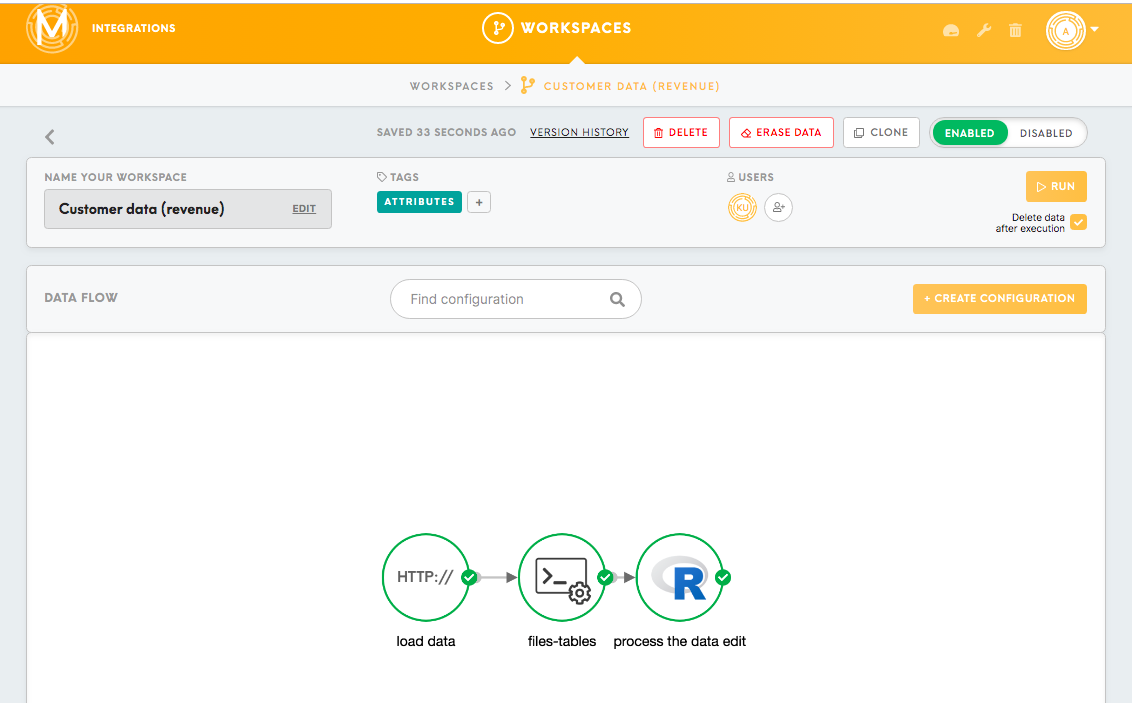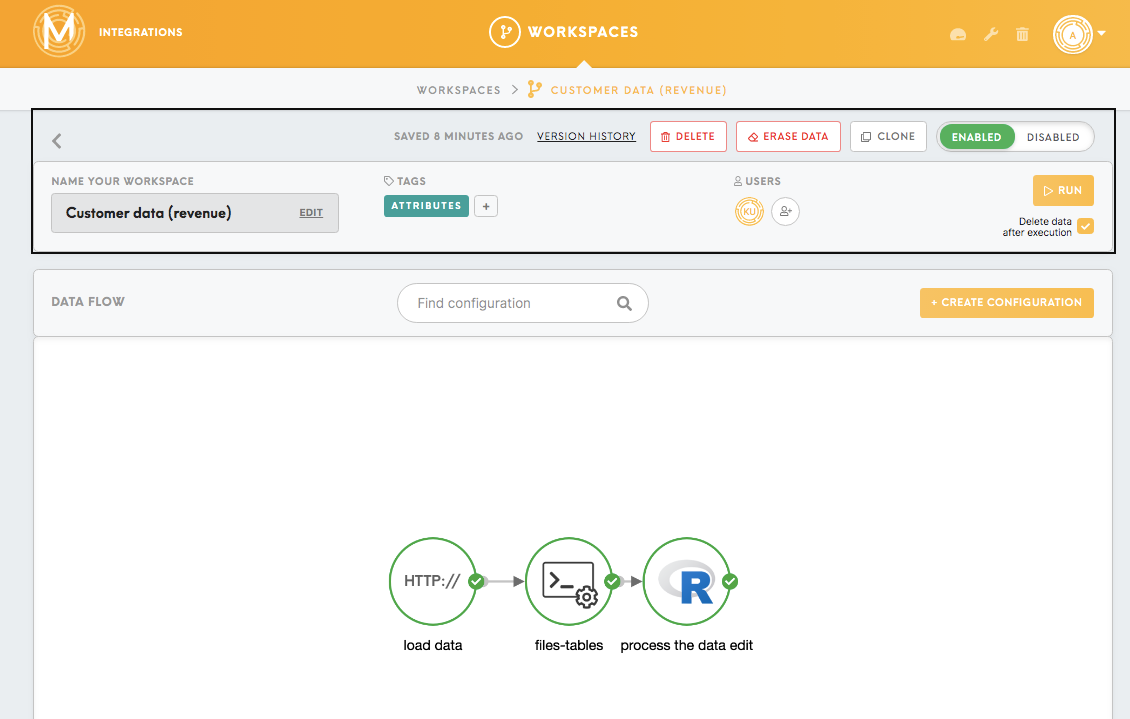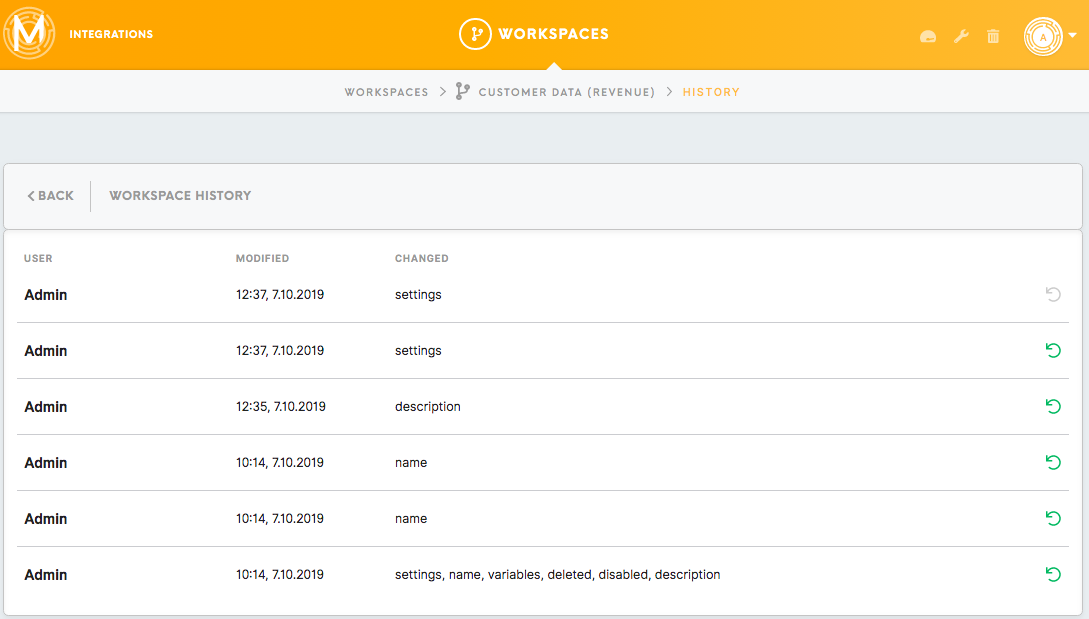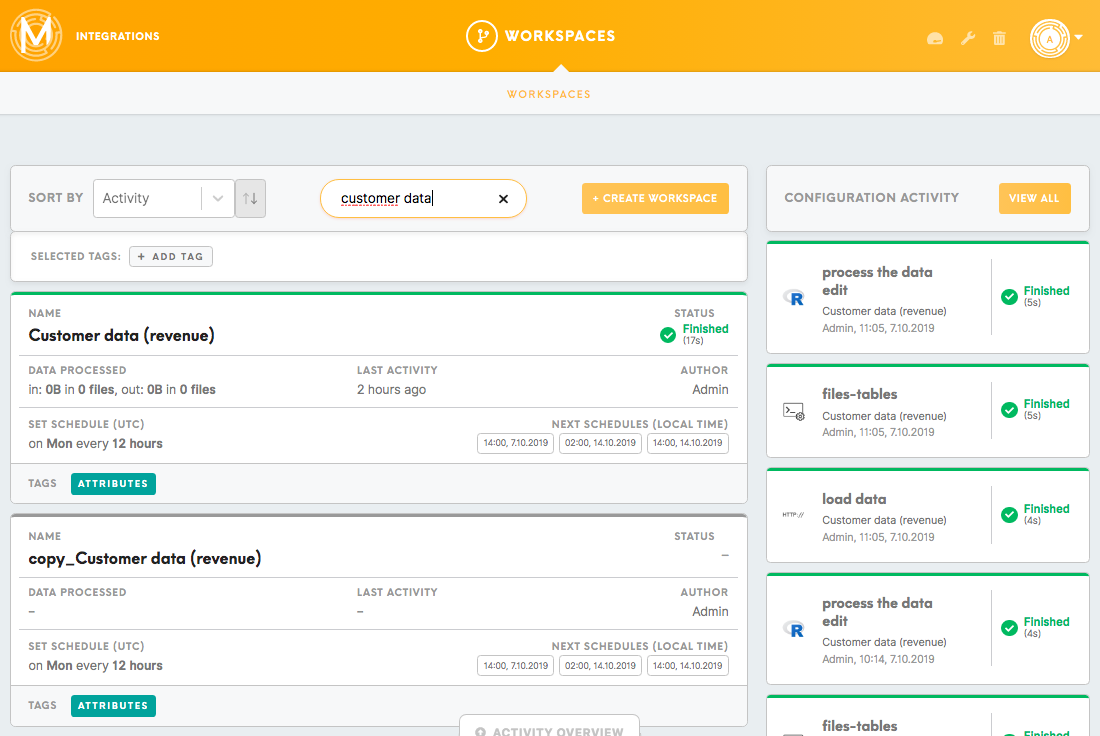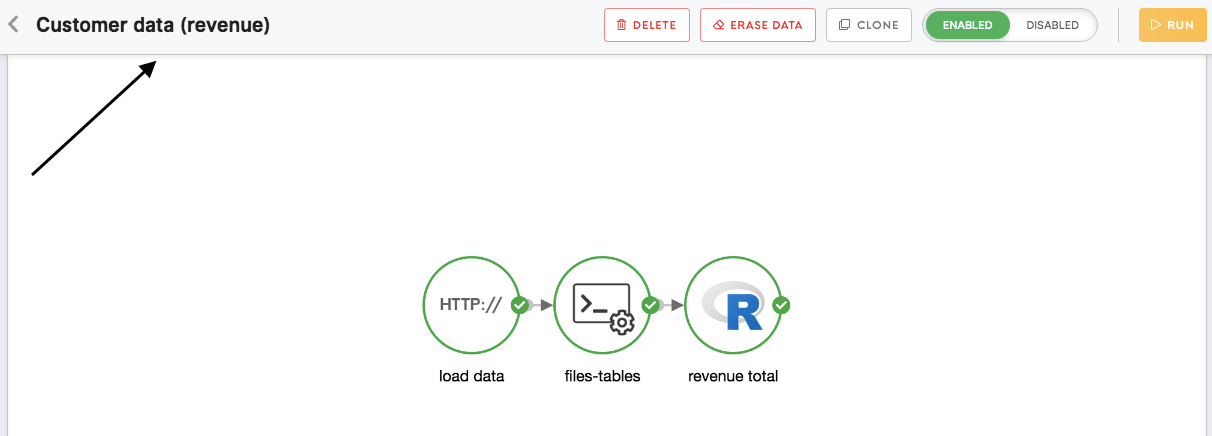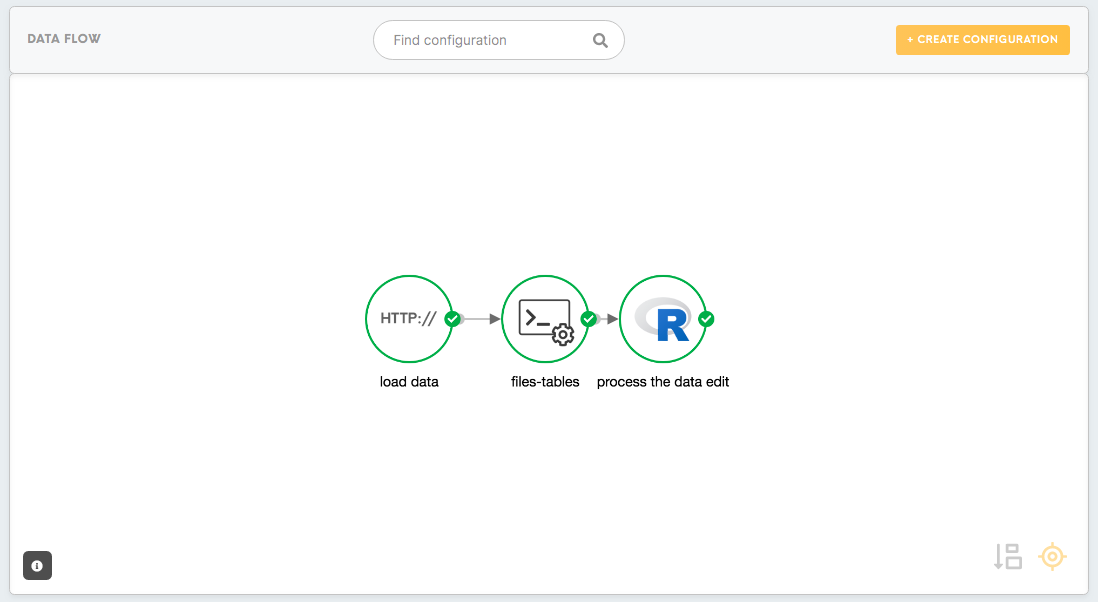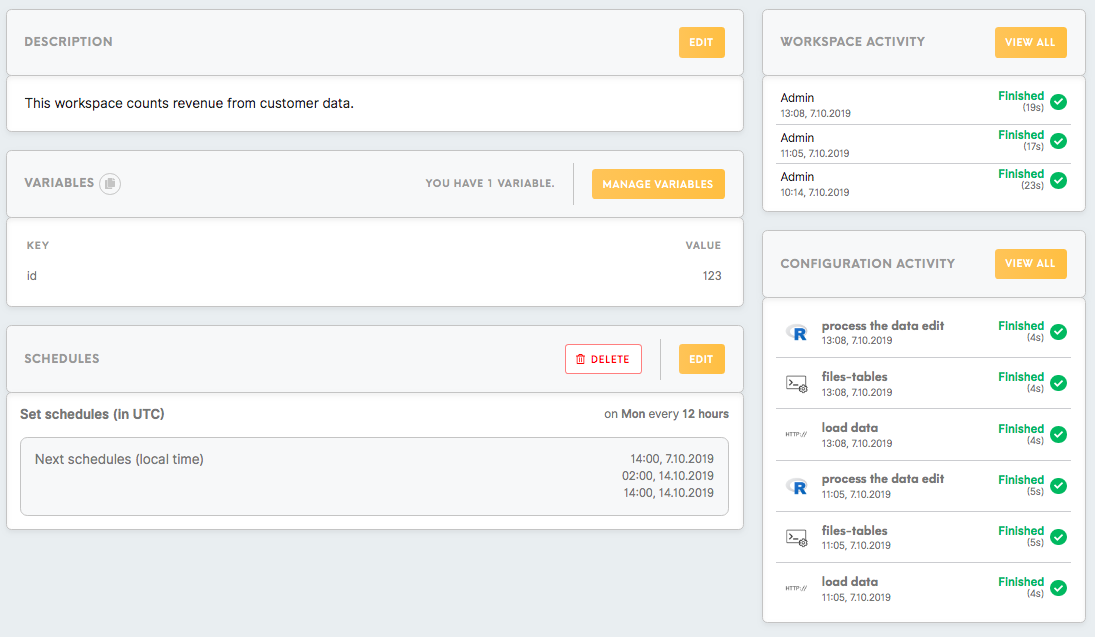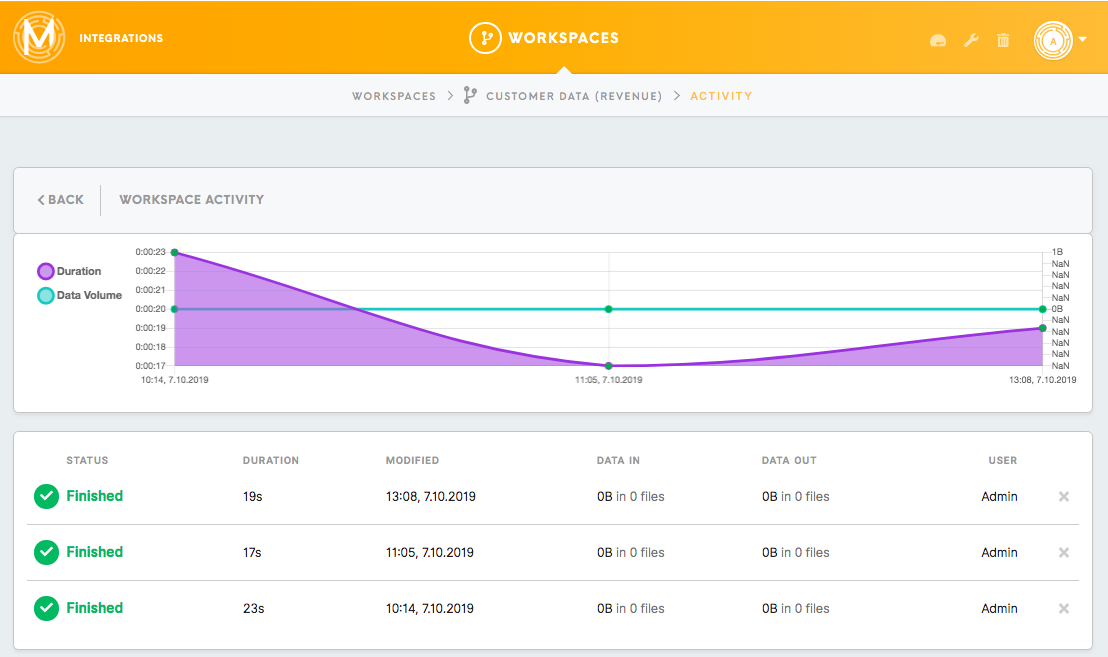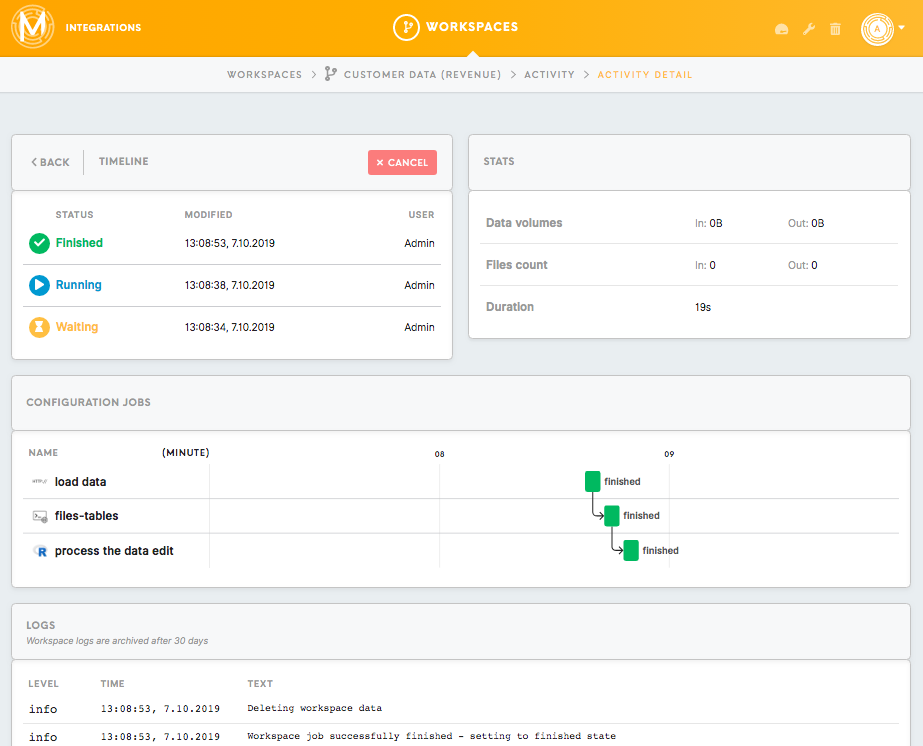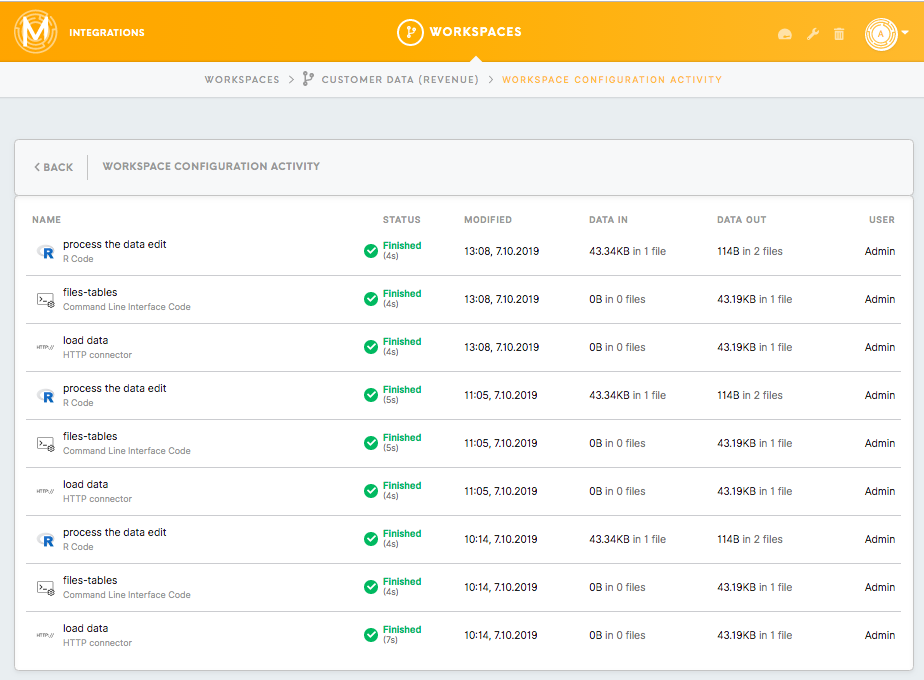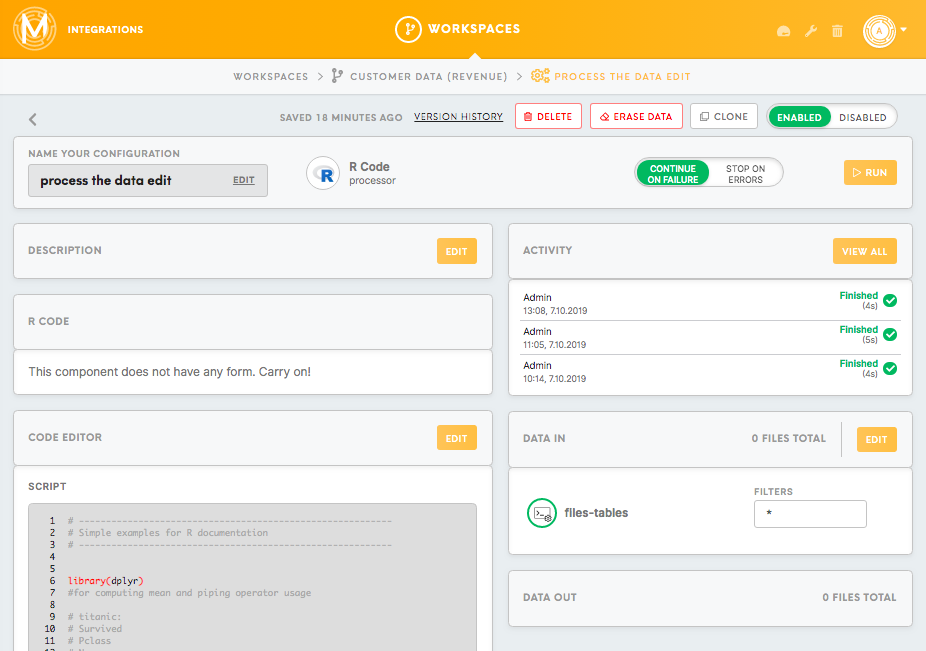Tab: Workspaces Detail
Workspace Detail
By clicking on a particular workspace in the Workspaces tab, you will be able to see its content.
Workspace's Header
- Saved (...)
This shows when the latest activity on this workspace was last saved.
- Version History
By clicking on the Version History, you will be able to view the history of the workspace along with listed modifications (i.e. user, date and time, what has been changed) to the workspace.
- Delete
Clicking on the Delete button will delete the entire workspace. Deleted workspaces can be subsequently found in the Trash tab.
- Erase Data
The Erase Data button will remove data from the workspace (configuration containers).
- Clone
By clicking on the Clone button, you will be able to copy your workspace.
A pop-up window will appear asking you to confirm or cancel. Your cloned workspace will appear in the list of workspaces. Cloned workspaces will have the word ‘copy’ appended to the name of the original workspace that they were cloned from.
- Enable/Disable
Toggle the Enable/Disable button to allow or stop your workplace from running. This feature could be useful for workspace scheduling purposes.
- Name your workspace
Choose a name for your workspace. You can edit this name at any time.
Choose the tag corresponding to your workspace. Tags help with organizing your workspaces and can be added by an admin in the Administration tab.
- Users
This will show you a list of users who have access to the workspace. You can invite more users by clicking on the Invite button.
To learn more about how to invite the user to the Meiro Integrations contact Meiro administrator.
- Run
Clicking the Run button will enable you to run the entire workspace.
- Delete data after execution
By checking this box, data will be deleted after the workspace execution.
By scrolling down through the workspace you will notice that some of the features from the workspace's header stay on the top to make use of the workspace easier and quicker.
Data flow
- Find configuration
The search box lets you search for a configuration that has already been created by inputting the name of the configuration (or the first letter of the workspace name, as character matching is supported).
- Create configuration
By clicking on the Create configuration button, you can add components to the data flow. The different components that can be used are connectors, processors and loaders:
- A connector lets you connect to the data source that you intend to use.
- A processor processes the data that has been taken as the input from the previous component (which is usually the connector) as per your needs.
- A loader lets you load the processed data that it receives as the input from the previous component (which is usually the processor) on to the preferred destination.
To learn about different components refer to this article.
For more information about particular components, refer to the articles about connectors, processors, loaders.
- Data flow
Data flow refers to the area in your workspace that contains the workspace’s components.
You can zoom in/out the data flow by pressing CTRL / ⌘ + scroll.
Hold Shift + mouse click: select or deselect multiple nodes.
Hold Shift + select area by mouse: select multiple nodes.
Click on the blank space workspace data flow: deselect multiple nodes.
Drag and drop selected nodes.
Learn how to create a workspace using our guide.
Workspace’s Additional Features
- Description section to describe your workspace and its components. This feature is optional and can be edited at any time.
- Variables section to manage your workspace’s variables.
You can learn more about variables in this article.
- Schedules section to set up a schedule for your workspace to run at your preferred times.
You can learn how to set up the schedule in this article.
- Workspace Activity
The Workspace Activity box displays when the whole workspace has been run, along with details of who ran the workspace, the date and time of when it was run and the activity’s status and duration.
Clicking on a View All will bring you to a summary of all activities for this workspace (status, duration, time and date of modification, data in, data out, user).
Clicking on a particular workspace activity will bring you to a more detailed page about the activity detail.
Learn more about activity details and different statuses please refer to this article.
- Configuration Activity
The Configuration Activity box displays specific components and their respective activity statuses.
Clicking on a View All will bring you to a Workspace Configuration Activity (name, status, duration, time and date of modification, data in, data out, user).
Clicking on a particular activity will bring you to the component’s page. You can check the activity details of this component in the Activity box.
To learn more about activity details and statuses please refer to this article.

